 |
 |
 |
 |
 |
 |
 |
 |
 |
 |
Home |
Edition Prints |
us: Bio/Exhibits |
Fund Raiser |
New |
Us |
Schedule |
Preservation Links |
Prints, Notecards, Posters |
covers |
 |
 |
 |
 |
 |
 |
 |
 |
 |
 |
Home |
Edition Prints |
us: Bio/Exhibits |
Fund Raiser |
New |
Us |
Schedule |
Preservation Links |
Prints, Notecards, Posters |
covers |
 AMERICAN BEAUTY: Part II
AMERICAN BEAUTY: Part II |
 B-24J - 44-41251 14 AF, 308 BG, 375 SQ, CBI 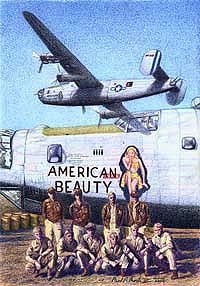 The "Forgotten" Fourteenth May WE Never Forget.... “Our versatility as a heavy bombardment group has been proven by day and night attacks, high, medium and low altitude bombing, mine laying and radar bombing. These sorties were against a variety of targets, most of which were heavily defended, in all kinds of weather and over poorly charted terrain. Units of this group have operated from behind enemy lines. Our men have become acclimated to enemy air raids and bombings, paucity of supplies and long periods of adverse weather conditions.” Col. John G. Armstrong, Commander 308th BG  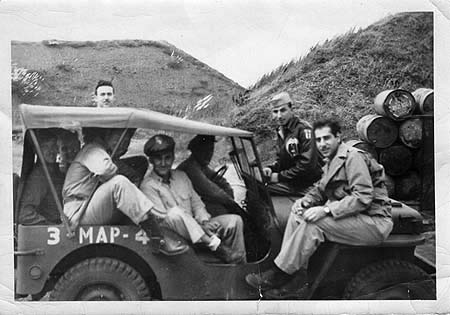 This photo is from Pilot, Ray Loughridge who took the picture of the crew in a revetment that protected the plane. Note the man-made looking mounds of dirt and 50 gal. oil/gas drums in the background. Navigator Chester Skotak is in the passenger seat looking right at the camera. My father in law, Mike Fevola, is on the right fender, behind him on the left fender is Al Smolensky, note the 375th BS patch on the left breast and the CBI patch on the left shoulder of his A-2 leather jacket. In the drivers seat is Co-pilot, Robert Ohlsen. Sitting directly behind Skotak is Red Mulley . Standing with his head visible above the roof is Bombardier Frank Riddle. The two men in the rear seat are Art Rockwood in the far back and Ed Mozier in front of him. There is a great feeling of "comraderie" in this shot. It was taken in October of 1944  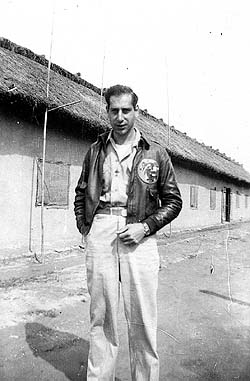 AMERICAN BEAUTY: Part II AMERICAN BEAUTY: Part II
Camp Life In China and Combat Missions: Mike Fevola in an A-2 Flight Jacket with the 374 Squadron insignia, in front of barracks in Kunming. He recalls that the jacket was given to him by a member of the Group from the 374th Sq., who had completed his required missions and was going home. The tradition was that the jacket would bring its new owner the same luck it had brought its previous owner. For Michael Fevola the tradition held true. Camp Life in China: “Our accommodations in Kunming weren’t half bad: we had our own barracks with 3 or 4 other crews, all noncoms. The officers had their own billeting and their own barracks. We had a house boy to tend to the stove and keep the building clean and if we wanted anything like our clothes washed we would give it to the houseboy, he’d get them washed for us and we’d give him a pack of cigarettes or something. I didn’t smoke so it didn’t cost me really anything at all. Also they had a bathroom, it was in the building, you could take a shower and tell the houseboy, he’d be sure that you had hot water and it made it very comfortable. We very seldom left the air strip to go anywhere. You could go into town which was about 5 or 7 miles distance from where we were.”  A Brief History of the 308th Bomb Group 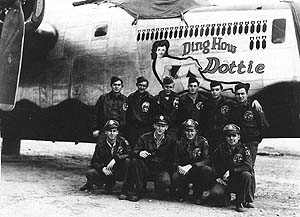 All of the following accompanying photos are of other 308th Bomb Group Aircraft and come from Michael Fevola's personal photo album. (right) Ding How Dottie and crew The 308th Bomb Group (Heavy) was activated on April 15, 1942 and began combat operations in China in March 1943. it consisted of the 373rd, 374th, 375th and 425th Bombardment Squadrons. Equipped with Consolidated B-24’s, the 308th was the only Heavy Bomber Group in the14th Air Force. The 308th was awarded a Distinguished Unit Citation for unescorted attacks through anti-aircraft fire and fighter defenses against docks and warehouses at Hankow on August 21,1945. A second Distinguished Unit Citation was awarded for actions against Japanese shipping during 1944 - 1945.   Two different shots of John Trisch, Rocky Rockwood, Red Mulley and Mike Fevola, clowning around in Kunming. During there first 2 years of operations ( May 1943- May 1945) the 308th never exceeded 90% of its authorized strength. They flew 4039 combat sorties totaling 34,975 hours and 6486 ferrying sorties totaling 21,603 hours. They accounted for 222 enemy planes confirmed shot down while expending 481,000 rounds of ammunition. They dropped 4090 tons of bombs and laid 433 tons of mines. 185 enemy vessels were confirmed sunk, totaling 678,000 tons of shipping. They also hauled 9827 tons of freight and supplies, much of it over “the Hump”. The “Hump” was the most hazardous mountain terrain in the world. Using mainly instrument flying procedures, the flyers would have to navigate the mountains and the weather . It was necessary to clear 17,000 foot peaks. Poor navigation toward the North and the aircraft would drift into 22,000 foot mountains: navigational errors toward the South and the men would end up flying over Japanes occupied Burma. Going down in either instance gave slim chances for survival. Virtually all of the equipment and supplies necessary to keep the 14th in the air had to be flown into China. A B-24 of the 308th could haul 4 tons of 100 octane aviation fuel. They had special B-24’s converted for cargo planes, they were designated C-87’s. During the round trip over the Hump from Kunming to Assam India and back to Kunming, the aircraft would burn 3 1/2 tons of the same fuel. Those supplies had already been shipped over 10,000 miles just to get to Assam. This explains why even a small amount of damage to a B-24, or the loss of one engine was enough to “total” the aircraft and render it inoperable. There was just no way to get large replacement parts for the planes. It is a wonder that the 308th and the 14th was able to fly any missions at all in the CBI, yet they did. Their impressive combat record speaks for itself.  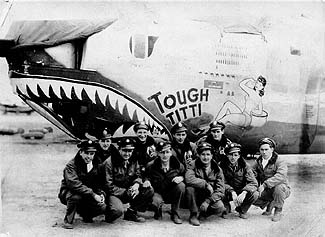 Jing Bao Jing Bao
“One night we got a call that there was a Jing Boa in progress. A Jing Bao would be an air raid and right outside our hut was a slit trench. When we got the word that it was a “red ball”(a one ball), if it was a white ball it wasn’t dangerous yet but if it was a red ball you had to get out and go into the slit trench. This night it was a red ball, an air raid, and we all jumped into the slit trench. In our hurry to get out the light was left lit and we were worried that the enemy aircraft would see the light and bomb our place. I was in the trench with Rockwood, Smolenski and some of the other guys. Rockwood jumped out, being that he was the last one out and didn’t turn out the light. He had to go back in and shut it. He was scared but he ran in shut out the light and then jumped back into the slit trench. (Laughs) The night passed and we got out in an hour or so. It was all over and we went back to our barracks. The next day we found out that they had just missed the theater area where some guys were seeing a show but nobody got hurt.”   Fevola and two members of a mine laying B-24 crew, Kunming China. Some of the local scenery. In 1944 and 1945 The Fourteenth Air Force operated on three main fronts: The northern Honan Province, along the Yellow River, where flyers concentrated on attacking Japanese airfields, destroying hundreds of planes at bases in Tsinan and at Hankow. The Hunan Front, where the Fourteenth attacked Japanese Army bases in Changsha, Hengyang, Lingling, Kweilin, Tanchuk, Liuchow and along the Hankow-Canton Railway. These actions harassed enemy soldiers in battle lines, and at supply centers, airfields, motor convoys and river transports. The West China front from Kunming to the Burma Road. The Fourteenth played an important role supporting a Chinese offensive that secured Tengchung, Lungling and Wanting. These victories reopened a land route along the entire course of the Stillwell Burma road into a long blockaded China.  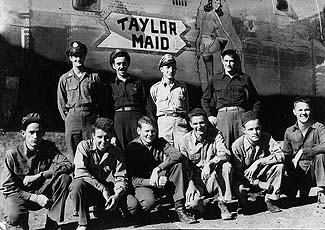 AMERICAN BEAUTY: Part III, Combat Missions: AMERICAN BEAUTY: Part III, Combat Missions:
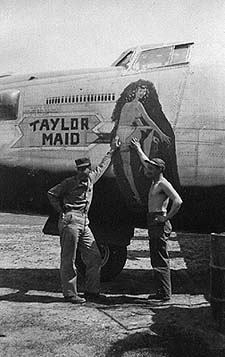 “As I remember it now, most of our missions in China were 10 hours plus, never less. It’s interesting to note that there were actually no milk runs. Our first couple of missions were uneventful but they still take the tension of being up there 10 hours or better. When you leave for a mission all the ground crew people that service the aircraft would line the runway and watch you taking off. Coming back if the mission was a success we’d fly “diamond” and the plane on the left wing would peel off, then the guy flying the point, and we would just peel off just like fighter planes. It was a way of setting the aircraft down very fast.  A Lucky Day 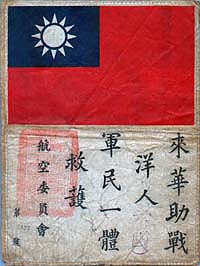 (Right) A "Blood Chit" worn on the back of an A-2 leather flight jacket identifying the wearer as an American Airman fighting the Japanese. It basically asks the local Chinese to assist him in returning to American lines. “We were on a mission to a munitions dump. It wasn’t too far away but there was plenty of ack ack up there. We got over the target and plenty of ack ack shot up at us, they missed thank goodness, and as we’re flying out of the target the pilot and bombardier are asking the tail gunner, Arthur Trisch, they’re asking him what he could see down there. He said that there was a big column of smoke coming up in the air at us, meaning that we had hit the target pretty well. There was plenty of fires down below that we had started. We got out of the area pretty well but on our way back we had our normal problem; the weather! The weather started to cloud in and we were only hoping to God that we would make it back in time before it clouded in and we couldn’t find the airfield. We were flying where we’re getting almost back to where we thought the field should be and we can’t find it through the clouds. We’re running low on gas and were scared that maybe we’re all going to have to bail out. Luckily at the very last minute, before the pilot gave the order to bail out, there was an opening in the clouds and we got down and we were right over the airfield. It was one of our lucky, lucky, lucky days.” (laughs)  Demise of "American Beauty" 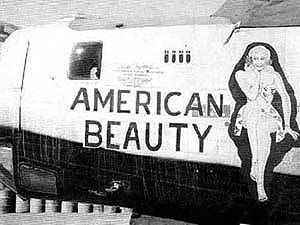 “We flew our first 4 missions which weren’t too bad. It’s the 5th mission where we had a real problem. We flew to the target and dumped our bombs. On our way back the airfield was socked in, overcast and cloudy. We couldn’t find the runway and we had no automatic landing equipment like they have today. We were assigned to land at a auxiliary field which happened to be a fighter field. Us and 3 or 4 other ships landed on this fighter base and we had to stay for the night. Lo and behold that evening, enemy aircraft come over and bombed the airfield. I guess they saw the big aircraft which were ours and went after those. The next morning when we went out to look at the damage they had put a huge hole through the wing and disabled the ship so badly that we couldn’t use it anymore. There was no way to bring in large replacement parts like that so we lost the aircraft. All the guns and ammo they kept at the fighter base and we lost the ship. We were the only ones that were hit out of that raid. We were pretty downcast and felt bad about it. We then became an alternate crew because we didn’t have our own aircraft. We were an ‘extra” crew.” Said Pilot Ray Loughridge, “It was a shame, “American Beauty” was a beautiful plane. Brand new. We picked her up brand new. She was wonderful to fly, she was a fine bird.” It is interesting to note that the few pictures of “American Beauty”, all show her with 4 mission bombs painted on her fuselage. The pictures were all taken AFTER her 4th mission and BEFORE her 5th mission, the one described by Ssgt Fevola as the one where she was lost. I know of only 4 photos of “Beauty” all of which show the 4 bombs. 2 were taken of the nose art alone and the other 2 were of the crew in front of the nose. The 2 crew shots shown here, were, upon careful examination, taken at the same exact time with the photographer just moving a few steps to the other side. I will assume that the other 2 “nose art” shots were also taken at the same time. It is my summation that had those photos not been taken then, we would probably not have ANY shots of “American Beauty” as she was lost shortly thereafter.  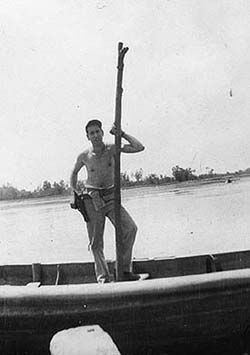 River Dogs River Dogs
Michael Fevola on a Sampan in China. River Dogs: “Life around the compound was very dull, there wasn’t much going on. One day one of the fellas from one of the other crews and I were walking around the compound and we heard a couple of shots go off. So we checked to see what was going on. We went up to this area close by a river, alongside a river. We looked and all of a sudden another shot rang out and we could see down there one of the Sgts. from the mess hall was shooting, not to hit anything but to scare away some dogs that were around the garbage, scavenging for food. Well we went back to our hut and happened to mention that to some of the guys in the barracks. Lo and behold that evening when we went to dinner, there wasn’t quite the normal number of soldiers that would go in for supper. The rumor got around that the mess Sgt. was shooting dogs for dinner.”  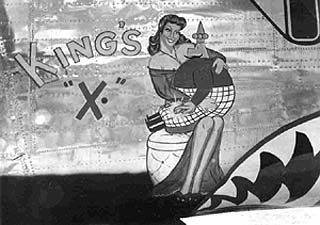 Good Shooting Good Shooting
“On our 6th mission our aircraft was parked on a revetment. we were flying “Kings X” that day. We were waiting on the runway and I was going to test my guns out. In a revetment there’s sandbags and dirt piled up to a height of about 10 to 15 feet. It’s like a U and your aircraft is in there and you test your guns before you take off. So I test fired my guns and then I stowed them in their position for flight. The guns are always pointed aft so they don’t affect the airstream when you’re about to take off and they’re not yet needed. So I’m wondering why we’re not taking off for the flight and we’re sitting there and finally after about a half hour the radio operator comes back and says we’re not taking this mission because there is something wrong with our radio. We were not able to raise the tower so the flight was canceled. Later after they checked everything out it seems that when I was test firing my guns I accidentally hit the antenna wire: now that’s almost an impossible thing to do, but it was my fault, I had cut the wire with one of my bullets and that’s why we were unable to participate in that bombing flight.”  Bombing the Kowloon Docks 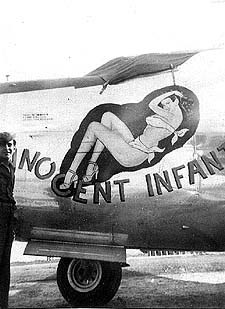 “About our 10th mission, this was to be a long mission. We were going to Formosa or Taiwan, a place called Kowloon Docks. We were going to bomb the shipping in the area. We had heard they were using allied prisoners to load the ships so we were going to bomb the ships so they couldn’t use the soldiers to load. Our aircraft was loaded with 2 big, bulky bomb bay tanks with plenty of gas. Our mission was to be around 15, 16 hours in the air. This was going to be a long mission and coordinated with aircraft from carriers at sea and with American aircraft from India. We were going to go in there and really raise hell! A few fighters came up to intercept us and they never even got close to the bombers. The escorts who were with us, P-51’s and 1 or 2 P-40’s, but mostly, I’d say 99% 51’s, they were out there they got them before they even got close to any body. Now this long mission started out alright and when we got quite a way in we took the shoreline of china, because Formosa was on the other side, it was an Island. We spotted allot of aircraft in the air so everybody manned their guns, ready to start shooting up the place but luckily, happily, we looked and they were our aircraft that had come to do their bombing. They were leaving the target as we were going in to the target. We dropped our bombs successfully and that was the excitement for the day. We came back after 15 hours tired and exhausted and that was it.”  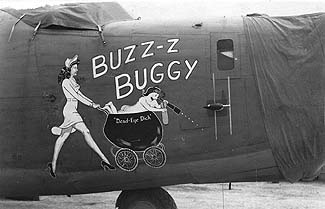 A Night Mission A Night Mission
Night Mission: “Around our 11th or 12th mission we were assigned a night mission to a Japanese staging area where alot of Japanese soldiers were gathered. This would be our first night flight. we went on this mission over enemy territory at night. A flight of four bombers with no escorts sent along with us; we were on our own. As we were going, getting close to the target, they had big searchlights; they shine up at you and the ack ack guns were going off and you could see the soldiers firing the guns when the flash of the guns went off. Going into the target the man on our right wing had his wing light on so he was giving away our position. Not only that, his wing was coming so close to our aircraft that we thought sure in heck he was going to hit us with his wing. So we went into sort of a shallow dive that gave us more speed so we could go over the target and get out faster. Thank God nothing happened, we didn’t get hit but we were scared stiff. Ray, the pilot didn’t mention it to the briefing officer what happened about the fact that the pilot on our right wing having his wing light on, giving away our position. But he did raise a little hell with the other pilot. I don’t remember who it was. It was dark. You couldn’t see anything.”  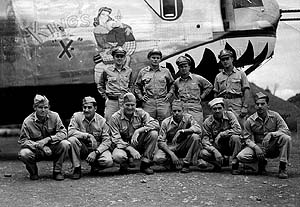 Kings X Kings X
“On our 14th or 15th mission we were flying “Kings X”. That was a comic strip character that one of the crews had named the aircraft after. I don’t remember too much about where we went but I do remember very vividly what happened on the way back. On the way back the pilot is getting ready to make his landing and he puts the wheels down. The main gear goes down all right but the nose wheel is down but it doesn’t register “locked” on the instrument panel. The light is on so they try kicking it and try wiggling the aircraft in flight and we keep flying around and now we’re starting to run a little low on gas. We’re still not able to get the nose gear down and “locked” on the board. Finally we try winding it down a little by hand, seeing if that would help but that doesn’t do it either. The pilot gives the crew the word that everyone should assume emergency landing positions. You sit down with your hands over your head and brace yourself for the landing. The pilot tells everyone-he gives orders in the back, in the aft section, that they should be ready to exit the aircraft immediately in case the wheel doesn’t hold and we crash. We’re all set, we’re all waiting. The pilot flies around and comes in for his landing. The first bounce it holds, on the second bounce it doesn’t hold and we go careening in on our nose. I was in the aft compartment, near the tail and I jumped out but it’s almost a full story high when the nose is down and the tail is way up in the air. Johnny Trisch was a very small guy, I was tall, I got out and naturally I helped Johnny out of the aircraft. We ran away from the plane, it didn’t burn up but it was a total wreck. That was our 2nd aircraft lost. We were getting to be a regular jinxed crew.” Although Ssgt. Fevola and his crew might have felt they were “jinxed”, they did lose 3 aircraft, they were actually far more fortunate when you look at the casualty statistics of the 308th Bomb Group. Col. John G. Armstrong, Commander of the 308th in 1945, issued a summarization of their casualties in May of 1945. “We lost 116 aircraft and 53 crews. 164 men have been killed, 70 wounded and 312 missing. A great many more have bailed out, but walked back safely. While many missions were difficult and several times they were close to having to bail out, the crew of the “American Beauty” always made it back to base alive. They would complete 25 missions and fly over 200 combat hours in various aircraft. They would earn the Air Medal and The Distinguished Flying Cross and ALL would return home, put their war years behind them, find jobs, raise families and quietly assimilated themselves back into main stream America. Michael Fevola returned to work at Fairchild Republic, got married and had four children, one of whom I would marry. The crew would keep in touch but over the years time would take from them what the War did not, untill only a few survive to tell their story. It is my hope that “American Beauty” will honor their efforts and shed some light on a bunch of regular guys who performed their duty to the best of their ability and whose record, though not remarkable, played a small part in the annuls of the history of the Second World War.  The Yellow River Bridge 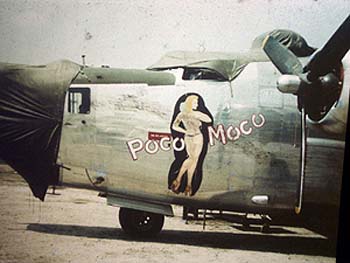 A very RARE color shot of "Poco Moco" from Ray Loughridge's collection. Click here to view our tribute to POCO MOCO. “As the missions begin to pile up we got to about our 20th mission. Some of the earlier crews have started to go home and we’re still there. We had to hit 25 missions before we were let go for rest and recreation, R and R. This was our 20th and one of our worst, the one that really scared the pants right off you. This one was over the Yellow River Bridge in China. We had knocked out the standard bridge they had built there but the Japanese had built up a pontoon bridge with a series of pontoons in the water. In order to get down to hit the target, it was in the middle of cliffed areas, you had to fly in between the cliffs to get down to the pontoons to hit the bridge. In order to do that you had to fly very, very low. We were given this mission because previously they had sent down P-51’s and they couldn’t do it. They lost quite a few aircraft. Then they sent for B-25’s and out of 6 they lost 4 and they couldn’t do it. So they thought they were going to do it now with precision-pin point bombing. It seems that for the Japanese it was a vital supply line and that they had their best anti aircraft gun crews down there. The mission was supposed to be a surprise mission and this is how they intended to do it. We would fly in a big formation, not at that particular target but at another target close by, making it look like that was the primary target but the primary target was really the bridge. We’re flying at 10,000 feet in a diamond formation. We’re in this big formation. All 4 squadrons are in on it. We’re flying the left wing of the diamond and we peel off just before we get to what seems to be the primary target but isn’t. We peel off and 4 other aircraft peel off the same way as we did and they formed up on our right wing, left wing, one is behind and one is below. We’re flying at 10,000 feet hoping the ack ack won’t get us. We come to where we have to make a left turn and the other bombers keep going straight ahead. We pull out, a guy forms on our right, a guy forms on our left and we go into a cloud bank. When we come out the guy on our left wing was just gone. So there was now only a guy on our right wing. We went over the target and our bombardier is setting up the sight. The bomb bays open and I see the bombs fall out. Where I’m sitting I can see this. They’re going down toward this pontoon bridge. We do our pinpoint bombing and we could see that we had hit the pontoon bridge. A couple of sections of it. I hear a little “Hurray” and the bombadier said we hit the bridge. We knocked out a span. In fact the photographic aircraft later on, high speed, I think they used 51’s or Black Widows to go in there later and take pictures; took pictures and verified that we had hit the target and we got a picture of it too. Anyhow, as we’re going through, past the target, pulling away, we’re happy and then all of a sudden I feel a thud and an explosion and the ship bounced a little. The ack ack catches our #3 engine, going right through the engine and the tank. A big piece of shrapnel, in fact we found out it was the nose of the shell, it lodged in the engine. As we pull out there’s gas all over the bomb bay. Then I hear a commotion below me and I look down and Ed Mozer, the flight engineer, he’s opening the bomb bay doors. We had hit the target, closed the doors gone on ahead but now he’s opening them up again. They open the bomb bay about a foot and a half on each side, they roll up and in the middle is a catwalk. I look down and I see gas just pouring right through the bomb bay going out the bomb bay. The fuel is just pouring out by the gallons. Some of it is bouncing off the catwalk. The pilot over the radio screams “Nobody use anything electrical and don’t call me unless it’s an absolute emergency!” Everybody man your guns ready to shoot anything that comes up at us!” Because they know we got hit and they may come up after us. If you have to move your guns move them manually, by hand, don’t use anything electrical” And you could move them by hand, every guy had 2 50 cal. machine guns."  
"We’re sitting up there, I’m sweating bullets, waiting to see what the hell is going to happen. I can see the gasoline going down. I’m sitting up in the upper turret and I can see the gas going down through the bomb bay and you could smell it. Fumes are all over the place. “No cigarettes! Don’t do a thing!” Then I see the plane on our right. We were away from them and he comes close to us and goes over us like to protect us. He saw what happened and he took us under his wing for protection and we stayed that way till we got close to an air strip. Meanwhile the pilot is looking for an advanced airfield to land on: a fighter strip. He says “We can’t make it back to base, we’re losing too much fuel.” Now we have a big bomber and landing on a fighter strip is a little tricky, you can run out of runway fast when you come down. The pilot couldn’t apply his breaks so he gave everybody, I must say he was really on the money, he told everybody what was going to happen- he says “I’m going in for this landing. We’re going to shoot the landing by blinker light” , like they use on boats. A blinker, the guy holds it in his hand. The radioman sends out a signal to the tower with this light, we were afraid to use the radio for fear of electrical sparks or static that could ignite all the gas fumes. He tells the strip he’s coming in under bad conditions, only 3 engines and the biggest problem was the fuel was all over the place. Meanwhile we’re frantically trying to switch over the fuel to the other tanks so it wouldn’t be continuously draining out with the chance of us blowing up in the air. The pilot said “On the landing we’re going to not try and apply our brakes until the very, very, last second. When I see I’m running out of runway I’m going to put on the brakes because we’re going to have friction and maybe we’ll have a spark and we’ll blow up that way too. Prepare for a crash landing and prepare to jump out of the plane the minute it stops rolling. Exit the aircraft IMMEDIATELY and run away from it so in case it does blow nobody gets hurt!” I’m not going to apply my breaks because I don’t want any sparks to ignite the fuel that’s coming out of the bomb bay.” Thank God we didn’t have any bombs on board, we had put them all on the target. The pilot comes in for his landing and he runs the whole length of the runway and he’s starting to go onto the grass and he applies his brakes and she stops very well and all the gears (landing gear) hold up well and everybody jumps out of the aircraft and we run down to the side. She didn’t explode or burn, thank God and we’re all okay. So it didn’t blow up but it’s another total loss. That’s the third aircraft we lost. They said they can’t fly in another wing. They need to put on another wing and there is no way to bring in another wing. The fighter squadron said they’d make good use of all the ammunition and guns we left, that they would shoot up the Japs and make them pay for what they did to our plane. All the guys there (at the fighter base) were hospitable, friendly, we’re billeted with a group of guys and they provide us with towels, soap, toothpaste and tooth brushes and even some goodies, candy and cigarettes. We stayed with a crew chief and he told us the next day the full story about how when the fighters couldn’t knock out the bridge they sent the B-25’s over and they couldn’t do it. He showed me the B-25’s, they had a cannon in the nose. He took me on the aircraft and showed me how it fit in there. The cannon went right between the pilot and the co-pilot and out the nose. He told me how they sent 6 out to do the job and lost 4, only 2 came back. Another bomber from our squadron came down and picked us up a day or two later and took us back to our base. When we got back we did find that reconnaissance had taken pictures and we each got one of the pictures of the knocked out bridge. We lost our aircraft for the 3rd time but we felt very good about having been able to accomplish the mission. Ray was a great pilot. No matter what happened he always brought us back. He always got us home.” The Yellow River Bridge was a constant target for the men of the 308th and the 375th Squadron. Records show the bridge was attacked on March 8, March 23, March 24, April 13, April 14, and May 11, 1945. Ssgt. Fevola’s mission was probably one of those in March or April. (Source) Glines, Carroll V., Chennault’s Forgotten Warriors: The Saga Of The 308th Bomb Group In China. 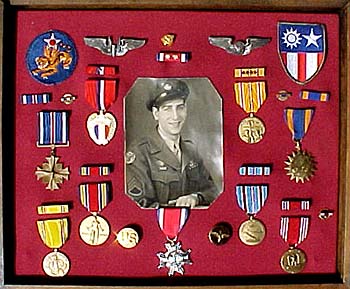 Michael Fevola's Medal Display The Four Squadrons of the 308th ceased combat operations in China in June of 1945. Personnel began receiving traveling orders back to the states at the end of August 1945, based upon a point system. Michael Fevola left via transport ship from India in August 1945, arriving in New York on September 1, 1945. He was sent to Fort Ord in Greensboro NC and honorably discharged on October 30, 1945. The last members of the group left India for the United States on December 7, 1945 aboard the S S General Black. On January 5, 1945 they arrived in New York, and then were assigned to Camp Kilmer, NJ. The 308th Bomb Group and its 4 squadrons were officially de-activated on January 7, 1945. “Operating from bases in China the (308th) Group swept the East and South China Seas, the Straits of Formosa and the Gulf of Tonkin, through all kinds of weather, sinking and damaging nearly three quarters of a million tons of vital Japanese shipping..........Heroically and deliberately, the combat crews developed and employed low-altitude tactics that brought their slow, heavy bombers down to within 400 feet of their targets during attacks. This exposed their aircraft to murderous fire from the armed merchantmen and naval vessels they attacked. ....Throughout the cited period, the group was forced to fly much of its own gasoline and bombs over the “Hump” into China, and in the same period was forced to evacuate from 3 bases before the advance of enemy ground forces. For several months the Group launched its sea-search missions from a base behind enemy lines in East China. The phenomenal achievements of the 308th Bombardment Group in its interdiction of these vital enemy shipping lanes are the result of extraordinary heroism, gallantry, determination and espirit-de-corps demonstrated by the members of this organization. Their attainments are consonant with the finest traditions of the American military service.” General Order # 114 Major General Charles B. Stone, Commander, 14th Air Force  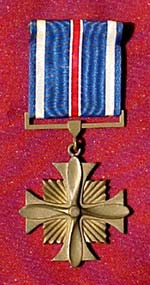 The Distinguished Flying Cross The Distinguished Flying Cross
Ssgt Fevola’s Distinguished Flying Cross Citation reads: "Pursuant to authority contained in Circular 55, U S Army Forces, China, Burma and India, dated 29 May 1944, and under the provisions of AR 600-45, dated 22 September 1943, the DISTINGUISHED FLYING CROSS is hereby awarded to the following named officers and enlisted men of the 308th Bombardment Group (H) for extraordinary achievement in aerial flight. They distinguished themselves while participating in more than 200 hours of combat flight in heavy bombardment type aircraft during the periods indicated. Although fire from hostile aircraft and enemy ground installations was encountered frequently, they carried out their missions with cool determination and inflicted heavy losses on the enemy. They attacked enemy installations, lines of communication and troop and supply concentrations throughout occupied China and struck at enemy vessels in the China Seas. Despite the fact that they possessed a minimum of navigational aids, they often flew through adverse weather and over mountainous terrain. The accomplishments of these officers and enlisted men reflect honor upon their personal records and are in keeping with the fine traditions of the Army Air Forces. Michael J. Fevola, Staff Sergeant, Air Corps, Aerial gunner. 17 October 1944 to 27 March 1945 Signed: C. L. Chennault, Major General, USA Commanding  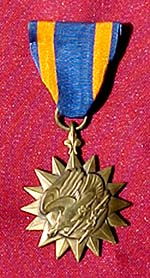
Among Fevola’s other decorations were: The American Defense Ribbon, The Asia-Pacific Service Medal w/ 1 Silver Star and 1 Bronze Star, The Good Conduct Medal and the Air Medal (Left). His official record notes that he participated in: The China Offensive, India Burma, Sou Philippines, Luzon, Western Pacific and China Defense Campaigns. 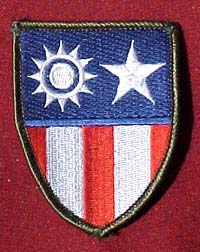 “The Aircraft Year Book for 1945” summarized the accomplishments of the Fourteenth Air Force: “The 14th AF under the dynamic leadership of Maj. Gen. Claire Chennault maintained the defense of the India-China transport routes and their China terminals, and co-operated with the Chinese ground armies within the established areas of the Fourteenth’s operations. That included destruction of hostile aircraft, river shipping and installations. A third mission, and one of its most effective types of operations was crippling of the Japanese military effort by continuos attacks against shipping in the South China Sea. Because of the terrific supply problem, the Fourteenth still was a comparatively small air force, and its operations were conducted in the face of obstacles that strained to the utmost the courage and endurance of the officers and men of the Flying Tigers, a name re-adopted in memory of an epic of air resistance in China and Burma during the early months when the allied cause was at a low ebb on all fronts. These obstacles included Chinese weather with its long rainy seasons; the uneven terrain over which the few air bases were widely scattered; the sole dependence upon air-flown supply; lack of US ground forces and the constant threat of an enemy almost ceaselessly on the offensive, pressing in from all sides. Despite these handicaps, the Fourteenth air Force steadily carried on blasting of Jap (sic) shipping and lines of communication. Its cooperation with the harassed Chinese armies.... was a powerful factor in bolstering the morale of the Chinese people......” “Within the limitations of available gasoline and bombs, strategic bombing missions were carried on throughout China and over the China seas. Devastating attacks were made on important Japanese bases in Formosa, Hainan and Indo-China. However, the heaviest and most telling blows of all resulted from unceasing attacks on enemy shipping, the most vulnerable part of the Japanese military organization...... Squeezed between Formosa and the China coast, Jap (sic) shipping routes were attacked repeatedly from the West by Gen. Chennault’s Liberators and Mitchells, driving coastal shipping into the area of deep sea submarine operations. The work of a special B-24 outfit using electronic devices for low altitude bombing through the overcast was noteworthy.” Dedicated with special thanks to the crew of “American Beauty” Special Thanks to: Doug Barbieri: Daniel Stockton: Glenn Ochs: Tony Strothman: Wallace Forman Copyright 2002: Paul R. Martin III Bibliography and sources: Rust, Ken C. and Muth, Stephen, Fourteenth Air Force Story, Sunshine House, Terre Haute, IN, 1990 Freeman, Roger A., The Consolidated B-24J Liberator. Profile Publications # 19, Surrey, England, 1965 Forman, Wallace R., B-24 Nose Art Directory. Specialty Press Publishers, Phalanx Publishing, North branch, MN. 1996 Glines, Carroll V., Chennault’s Forgotten Warriors: The Saga Of The 308th Bomb Group In China. Schiffer Military/Aviation History Publishing, Atglen, PA, 1995 Feuer, A. B., General Chennault’s secret Weapon: the B-24 in China. Praeger Publishers, Westport, CT, 1992 Mingos, Howard., The Aircraft Year Book for 1945. Lancair Publishers, Inc., New York, NY, 1945 Andrews, Phillip., Air News Yearbook, Vol. 2. Duell, Sloan and Pearce, Inc., New York, NY, 1944 Cornelius, Wanda and Short, Thayne, Ding Hao: America’s Air War in China, 1937-1945. Pelican Publishing Co. Gretna, LA, 1980 Terry, Thurzal Q., Strangers In Their Land: CBI Bombardier, 1939-1945. Sunflower University Press. Manhattan, KS, 1992 Henderson, William A., From China, Burma, India to the Kwai. Texian Press, Waco, TX, 1991. Related Links    The outstanding record of the 308th Bomb Group is best summed up by General Chennault when he wrote, “They took the heaviest combat losses of any Group in China and often broke my heart by burning thousands of gallons of gas only to dump their bombs in rice paddy mud far from the target. However their bombing of Vinh railroad shops in Indo-China, the Kowloon and Kai Tak docks at Hong Kong, and the shipping off Saigon were superb jobs unmatched anywhere. When the Army Air Forces Headquarters in Washington tallied the bombing accuracy of every bomb group in combat, I was astonished to find that the 308th led them all.” "AMERICAN BEAUTY" B-24J 44-41251 14 AF, 308 BG, 375 SQ, CBI Image size 8" x 11" Edition Size: S/N Regular Edition of 308 Price: Regular Edition of 308: $80.00 each, Unframed Price: S/N Regular edition of 308: $80.00 each Unframed, plus $5.00 flat ShippingPrice: S/N Regular edition of 308: $199.00 each, Professionally and handsomely Framed, plus $10.00 Shipping Please inquire about availability of VERY limited edition of CREW MEMBER SIGNED A/P's (edition size of ONLY 30) Contact Us We also have a custom printed B&W 375th Logo version of the Regular Edition or a 375th B&W Hand Drawn Remarque version of the regular edition. Both are available upon request and cost a little extra. Contact Us   A great website devoted to B-24's. NEW!: A Tribute to POCO MOCO B-24J, 44-49451 14th AF, 308th BG, 375th BS  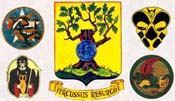 308th Bomb Group, 14th AF, CBI 308th Bomb Group, 14th AF, CBI
A wonderful website dedicated to the 308th Bomb Group.  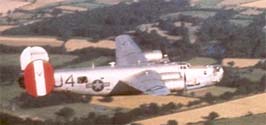 458th Bomb Group (H) 458th Bomb Group (H)
A beautiful new site created by Darin Scorza to honor his father, Navigator Samuel D. Scorza and this B-24 8th Air Force Bomb Group. Wonderful unpublished photos and recollections of this highly decorated group.  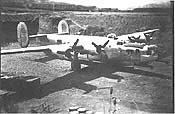 Miss Mandy Miss Mandy
Here is a great site dedicated to another 14th AF, 308th BG Aircraft, “Miss Mandy”. Created by Bob Donnan to honor his father, 1st Lt. David Donnan, Navigator, this site has some wonderful photos, stories and memoribilia from this 374th Squadron B-24J. May we never forget.   A real nice website devoted to all the Heavy Bombers of WWII: B-24, B-17 and B-29 | American Beauty | AmericanBeauty2 | So Gallantly Streaming | silver wings | | Gettysburg Series | Great American Portrait Series | WWII Series | Revolutionary War Series | Civil War Series | West Point Series | Banners Of Glory Series | | Return Home | Limited Edition Prints | About us: Bio/Exhibits | 9-11 Fund Raiser | What's New | Contact Us | Events Schedule | Friends- Preservation Links | Mini Prints, Notecards, Posters | book covers | |
||
